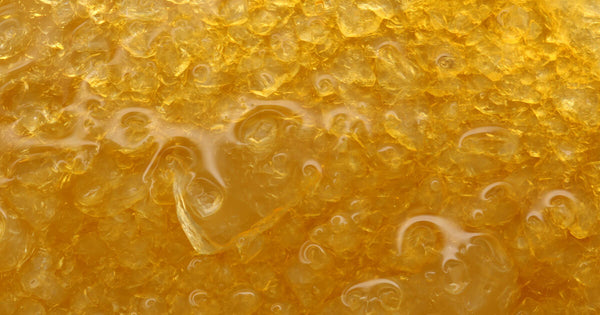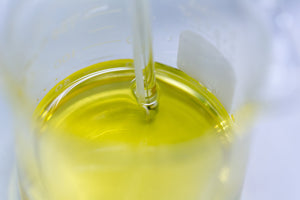Color Remediation: Frequently Asked Questions
Mar 16, 2021
Color remediation is the latest and greatest processing technique used to refine the color, flavor, and aroma of your crude extract. Using a variety of media, this technique can remove chlorophylls, pigments, and other undesirables to achieve a lighter, more translucent hue.
As a relatively new post-processing addition to extraction workflows across the world, there are many questions about the refinement process. What equipment do you need? Does the media differ based on the solvent used? How do you perform color remediation? We answer all of your frequently asked questions, so you can start your color remediation journey today.

What Is Color Remediation?
First things first, what is color remediation, anyway? Simply put, it is the process of separating undesirable impurities from hemp and cannabis extracts. After the initial extraction process, the extract and solvent mixture is filtered through a color remediation column (CRC) containing different media for filtration of select compounds. At the end of the filtration process, the extract will have a lighter color and better aroma and flavor.
What Is a Color Remediation Column?
A color remediation column (CRC), also known as an inline remediation column, is a separate and connected column between your biomass column and your recovery/collection column. CRC is used as filtration for hydrocarbons primarily, but also for ethanol and CO2 extraction systems.
Mounted directly onto the frame of your system, columns vary in their capacity, width, and length. Generally, a 4 inch by 18 inch column is the standard. Stainless steel components can handle high pressures and a wide range of temperatures. The filter media is packed inside the column, usually in layers, in a variety of ratios of media to biomass, depending on the extractor’s preference and desired end product.
What Are the Benefits of Using Color Remediation?
Color remediation techniques vary based on the equipment and extractor’s expertise. Under optimal lab-grade conditions, this post-process refining method can yield noticeably better looking, smelling, and tasting extracts.
-
All extractions leave behind varying levels of impurities. Color remediation essentially purifies the crude extract to achieve a better jar appeal. Keep in mind, the results from this refining process depend on the initial material’s quality.
-
As its name suggests, color remediation remediates, or provides a remedy, for dull and dark colors. Generally, extractors may use this method to remove excess phospholipids and pigments from lower-quality biomass to reduce its brown and murky appearance. However, even high-quality extracts can benefit from a color remediation. Produce a translucent and nearly clear or light yellow color that is sure to turn heads.
-
Achieve lip-smacking extracts using CRC technology. Many of those same undesirable compounds that produce the darker tint also have a bad taste when consumed. By removing the dark compounds, extractors can improve the flavor of the final product.
What Are the Drawbacks of Color Remediation?
If performed under the right conditions, CRC technology has minimal to no downsides. However, operator error and certain misconceptions can end up ruining your crude extract unintentionally.
-
For consumers, CRC-filtered extracts can boast a deceptively appealing color. In rare cases, its refined color may not be a true indicator of its smell and taste. CRC can definitely spruce up the lowest quality extract, but only to a certain degree. Shopping from reliable and licensed producers can prevent this problem.
-
Color remediation involves an additional step in the cannabis extraction workflow. The risk for operator error can increase when a new process is introduced. Following the manufacturers loading instructions and ratio recommendations can prevent mishaps.
-
Achieving the right flow rate and media to biomass ratio can affect the efficacy of filtration. An operator who is not well versed in CRC procedures may use a strong flow rate, which will not allow the proper filtration to occur. A proper standard operating procedure can reduce this issue.
-
Certain types of media can break down over time and end in the final product, which will contaminate it. Using stable and easy-to-use media can eliminate the potential for the media leaking onto the final extract.
As you can see, color remediation is not a set-it-and-forget-it process. Even with automated technology, an operator must have sufficient extraction experience to troubleshoot any issues that pop up along the way. For the most part, the only frustration an operator will have is fine-tuning the workflow to get an even brighter and lighter color.
What Are the PPE Best Practices?
When performing color remediation, an operator must follow strict safety protocols and reference safety data sheets (SDS) for all media and chemicals used in the process. All personnel should use personal protection equipment (PPE) during every step of the extraction and remediation process. We recommend the following PPE:
-
Safety glasses
-
Gloves
-
Lab coat
-
Respirator
-
Non-slip footwear
In some cases, the media is non-toxic and granular instead of a powder, which is safe to handle without full PPE, but not recommended. Regardless of the media type, always wear full PPE for the most safety.
What Are the Different Types of Media?
Filtration media is packed into the CRC to remove the impurities from the crude extract. An extraction technician can use a variety of media types, each in varying suggested ratios. In a color remediation column, the media acts as a stationary phase and can remove pesticides, colors, and polar impurities. Media is available in a wide range of powders and adsorbents including:
-
Activated charcoal: Removes colors, flavors, and other impurities
-
Diatomaceous earth: Removes color and other impurities
-
Activated bentonite clay: Removes color
-
Activated alumina: Removes colors, fats, and polar compounds
-
Activated magnesium silicate: Removes color and pesticides
-
Activated silica gel: Removes color and polar impurities
-
Activated bleaching earth: Removes color
-
Degumming enzyme: Removes plant gums
-
Activated hardwood carbon: Absorbs and removes impurities
In addition, extraction companies can choose from a variety of proprietary media with tremendous adsorbent capabilities. Ready-to-use media can have some of the best results on a single pass.
How Does Adsorbent Media Work?
Absorbent filter media is capable of separating a certain compound from a liquid or gas substance. A substance’s adsorbent characteristics function based on the electrical attraction of molecules. However, oversaturation and under saturation of the absorbent media can negatively affect the final extract. Oversaturation can allow impurities to go through without filtration. Under saturation can hold onto cannabinoids leading to a lower yield.
Can You Use Multiple Media at Once?
It is actually encouraged! By using a wide range of adsorbent media, processors can target different compounds including pigments, chlorophylls, partial carotenoids, and other undesirables, preferably in a single pass.
If using multiple media at the same time, it is recommended to use a layering technique instead of mixing the media together. Volume and percentage split will depend on the quality of the material and composition.
How to Determine Ratios of Media to Biomass
How much media should you use? The amount of media you pack into the CRC depends on the quality of your material and your desired outcome. Needless to say, there are many variables to consider including run times, temperature, psi, and more. Ultimately, the amount of media used correlates with the amount of biomass being run.
If possible, test the cannabinoid content in the biomass and multiply that number by the weight of your biomass. Media to biomass ratios vary between 6:1 to 10:1. Ideally, use as much media per pound of biomass as possible for better refinement.
If using proprietary media, start with the recommended manufacturer’s amount and fine-tune from there. Using more of the media can result in a finer end product without affecting the amount of cannabinoids and terpenes in the final product.
How Do You Use Filtration Media?
Loading the media into the CRC properly can determine the level of filtration you achieve. To begin, check the directional flow of the extraction system. With a regular flow system, the media goes on the bottom of the extraction vessel, under the biomass. In a reverse flow system, the media goes on top, above the biomass. If a system has a regular and reverse function, add the media on the bottom and the top.
When loading the filtration media, make sure there are qualitative filter papers (or unbleached rags, paper towels, coffee filters) above and below the media to act as a buffer between the biomass and the output side of the extraction vessel.
Before loading the media into your column, make sure there is a sintered disk, with an appropriate micron size, at the bottom of it. This will ensure your media media doesn’t end in your final product.
Based on your pre-determined ratios, add the media into the CRC and make sure it is pushed down. Close the CRC and ensure it is nice and tight.
How Many Times Can You Use the Media?
How often do you have to change the media from the CRC? In an ideal world, the media would suffice for a single run. In the real world, processors can run the media a couple of times (or more) depending on the desired final extract.
Is There a Risk of the Media Leaking into the Extract?
Processors who make extracts for medical and recreational markets should pay careful attention to the media's ability to degrade and leak into the extract. Traditional clays and powders can run the risk of leaking into the system. Certain proprietary media that takes on a granular form can also slip through the cracks if used incorrectly.
Media Bros: CRX, CRY, and CR2 Media
Media Bros is your one-stop-shop for all things color remediation. We have developed a line of non-toxic filter media adsorbents capable of improving crystallization, purity, clarity, color, and taste of your extract.
Request a sample from our extract professionals so you can see the difference firsthand. Whether you are creating BHO or using CO2 as a solvent, our media exceeds industry standards to produce a better extract.








